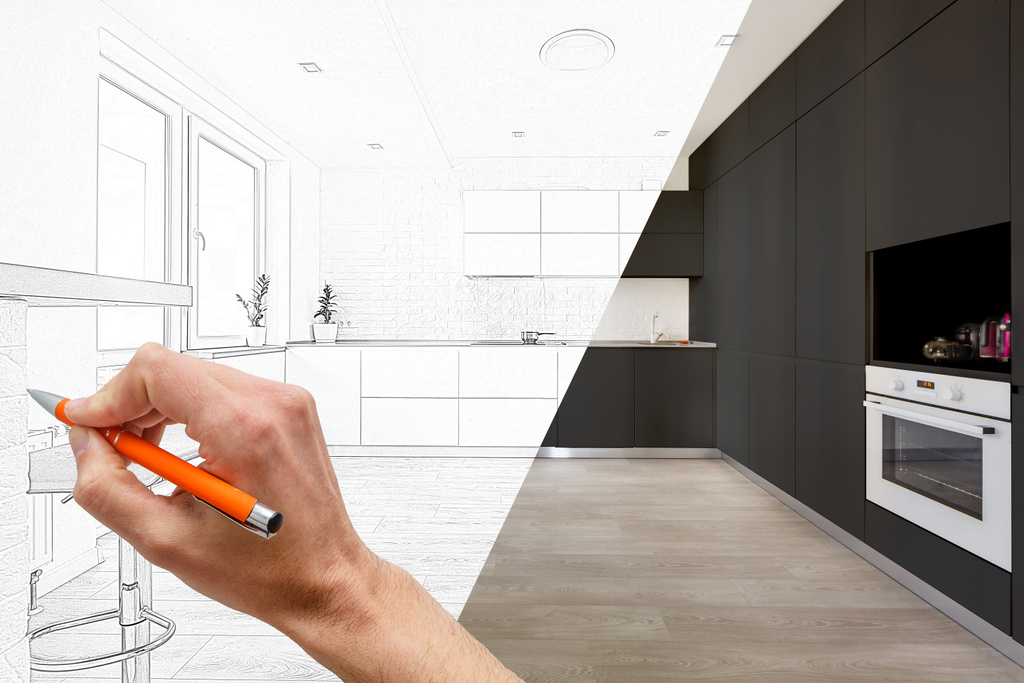Designing a kitchen is an exciting yet challenging task. The kitchen is the heart of the home, where meals are prepared and memories are made. However, it’s easy to fall into common pitfalls that can turn your dream kitchen into a nightmare. In this blog post, we’ll explore how to avoid the five worst kitchen design mistakes to ensure your space is both functional and beautiful.

-
Ignoring the Work Triangle
What is the Work Triangle?
The work triangle refers to the optimal layout between three key areas: the sink, oven and refrigerator. These are the most frequently used zones in any kitchen and their placement can impact efficiency.
Ignoring the work triangle in your kitchen design can lead to a disorganised and inefficient workspace. If these elements are too far apart or awkwardly placed, you’ll find yourself taking unnecessary steps and wasting valuable cooking time.
To avoid this common kitchen design mistake:
- Ensure that each leg of the triangle measures between 4 and 9 feet.
- Keep obstacles like islands or cabinets out of this path.
- Aim for a balanced layout where these three points form an efficient workflow.
-
Poor Lighting Choices
The Importance of Good Lighting
Lighting plays a crucial role in both functionality and ambiance. A well-lit kitchen makes cooking easier, while creating an inviting atmosphere.
Relying solely on overhead lighting or neglecting task lighting can leave your kitchen dimly lit and impractical for tasks like chopping vegetables or reading recipes. It’s also a missed opportunity to get mood lighting in your kitchen, to enhance the look and feel of the space.
To avoid poor lighting choices:
- Incorporate multiple layers of lighting: ambient (general), task (focused), and accent (decorative).
- Use under-cabinet lights for countertops.
- Consider pendant lights over islands or dining areas for added style and functionality.
-
Insufficient Storage Space

The Need for Adequate Storage
A clutter-free kitchen is essential for maintaining order and efficiency. Lack of storage can lead to overcrowded countertops and difficulty finding what you need when you need it.
Underestimating your storage needs can result in a chaotic environment where appliances, utensils, and pantry items have no designated place.
To ensure sufficient storage:
- Utilise vertical space with tall cabinets.
- Include pull-out carousels (often called ‘le-mans’) in corner cabinets.
- Opt for deep drawers instead of traditional cabinets for pots and pans.
- Consider adding a pantry or extra shelving if space allows.
-
Overlooking Ventilation Needs
The Role of Ventilation
Proper ventilation is crucial for maintaining air quality by removing cooking odours, smoke and grease from your kitchen, as well as balancing the moisture created when cooking.
Neglecting ventilation can lead to lingering smells, moisture buildup, and even potential health hazards from poor air quality.
To ensure adequate ventilation:
- Install an extractor hood that vents outside rather than recirculating air.
- Choose a hood with adequate power based on your cooking habits.
- Regularly clean filters to maintain efficiency.
-
Choosing Style Over Functionality
Balancing Aesthetics with Practicality
While it’s important for your kitchen design to reflect your personal style, prioritising aesthetics over functionality can compromise usability.
Opting for trendy materials that aren’t durable or selecting appliances based on appearance rather than performance can lead to frustration down the line.
To strike the right balance:
- Choose materials that are both stylish and durable (e.g., quartz countertops).
- Select appliances based on reliability reviews rather than just looks.
- Ensure cabinetry offers practical features like soft-close hinges or built-in organisers.
If you’re ready to start your kitchen design planning journey with an award-winning local kitchen company in Birmingham, UK, visit https://classicinteriors.co.uk
